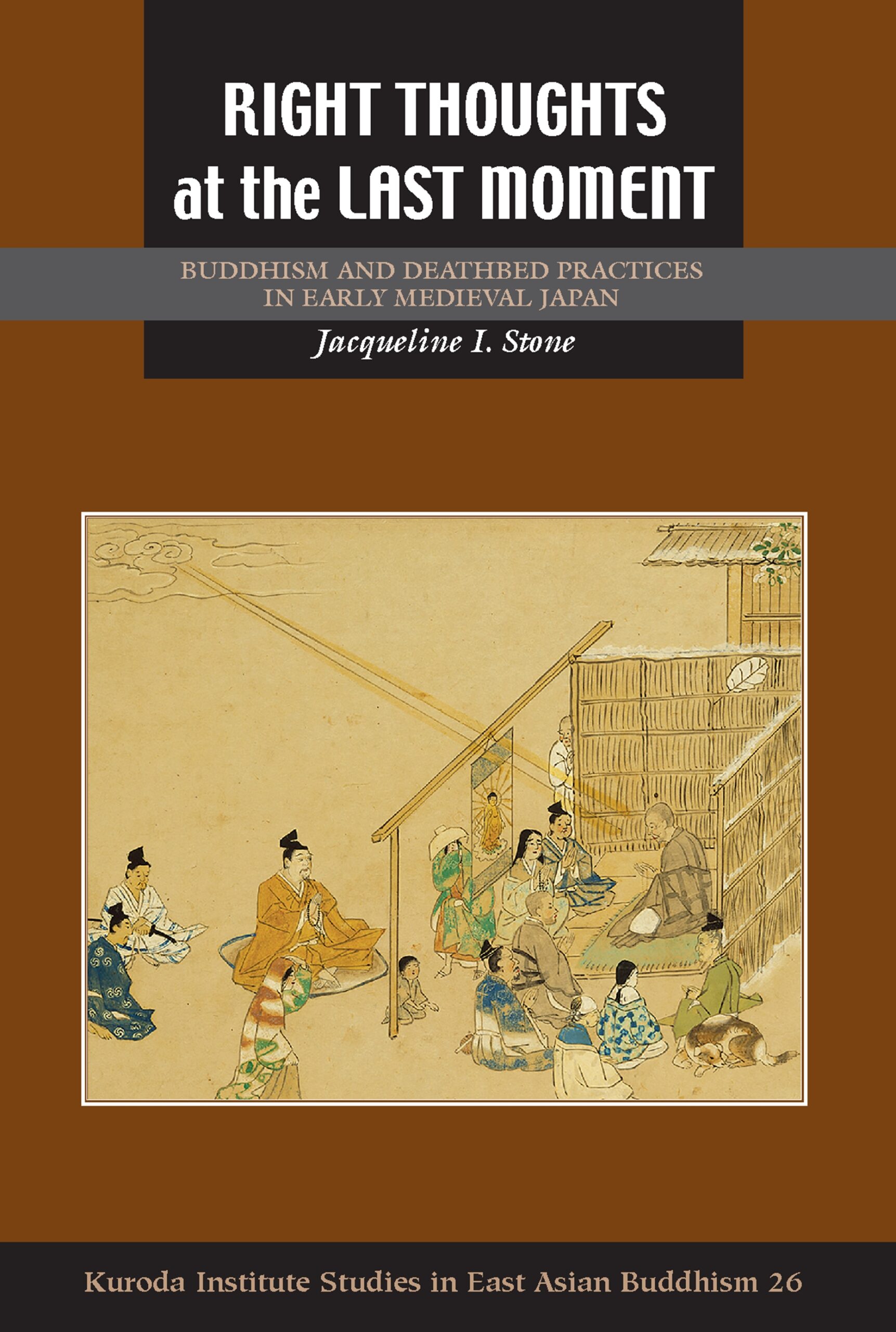Right Thoughts at the Last Moment: Buddhism and Deathbed Practices in Early Medieval Japan
Awards
- Winner of the Toshihide Numata Book Prize in Buddhism, 2017
- About the Book
-
Buddhists across Asia have often aspired to die with a clear and focused mind, as the historical Buddha himself is said to have done. This book explores how the ideal of dying with right mindfulness was appropriated, disseminated, and transformed in premodern Japan, focusing on the late tenth through early fourteenth centuries. By concentrating one’s thoughts on the Buddha in one’s last moments, it was said even an ignorant and sinful person could escape the cycle of deluded rebirth and achieve birth in a buddha’s pure land, where liberation would be assured. Conversely, the slightest mental distraction at that final juncture could send even a devout practitioner tumbling down into the hells or other miserable rebirth realms. The ideal of mindful death thus generated both hope and anxiety and created a demand for ritual specialists who could act as religious guides at the deathbed. Buddhist death management in Japan has been studied chiefly from the standpoint of funerals and mortuary rites. Right Thoughts at the Last Moment investigates a largely untold side of that story: how early medieval Japanese prepared for death, and how desire for ritual assistance in one’s last hours contributed to Buddhist preeminence in death-related matters. It represents the first book-length study in a Western language to examine how the Buddhist ideal of mindful death was appropriated in a specific historical context.
Practice for one’s last hours occupied the intersections of multiple, often disparate approaches that Buddhism offered for coping with death. Because they crossed sectarian lines and eventually permeated all social levels, deathbed practices afford insights into broader issues in medieval Japanese religion, including intellectual developments, devotional practices, pollution concerns, ritual performance, and divisions of labor among religious professionals. They also allow us to see beyond the categories of “old” versus “new” Buddhism, or establishment Buddhism versus marginal heterodoxies, which have characterized much scholarship to date. Enlivened by cogent examples, this study draws on a wealth of sources including ritual instructions, hagiographies, doctrinal writings, didactic tales, courtier diaries, historical records, letters, and relevant art historical material to explore the interplay of doctrinal ideals and on-the-ground practice.
- About the Author(s)
-
Jacqueline I. Stone, Author
Jacqueline I. Stone is professor of religion at Princeton University.Robert E. Buswell, Jr., Series Editor
Robert E. Buswell, Jr. holds the Irving and Jean Stone Endowed Chair in Humanities at the University of California, Los Angeles (UCLA), where he is also Distinguished Professor of Buddhist Studies in the Department of Asian Languages and Cultures and founding director of the university’s Center for Buddhist Studies and Center for Korean Studies.
- Reviews and Endorsements
-
- Stone’s crystal-clear prose helps the reader to stay afloat in the ocean of sources presented. And this book is indeed thick with stories and diverse examples of deathbed practices, both idealized and presumably actually performed, but with the structured composition style employed by Stone this is an enjoyable read. This is but one of the many commendable features of this book that leads me to recommend this work as an exemplar of how to produce a well-organized, well-written monograph. I would recommend this book to any scholar of Japanese studies, religious studies, or Buddhist studies.
—H-Japan
- Stone’s crystal-clear prose helps the reader to stay afloat in the ocean of sources presented. And this book is indeed thick with stories and diverse examples of deathbed practices, both idealized and presumably actually performed, but with the structured composition style employed by Stone this is an enjoyable read. This is but one of the many commendable features of this book that leads me to recommend this work as an exemplar of how to produce a well-organized, well-written monograph. I would recommend this book to any scholar of Japanese studies, religious studies, or Buddhist studies.
- Supporting Resources
-





